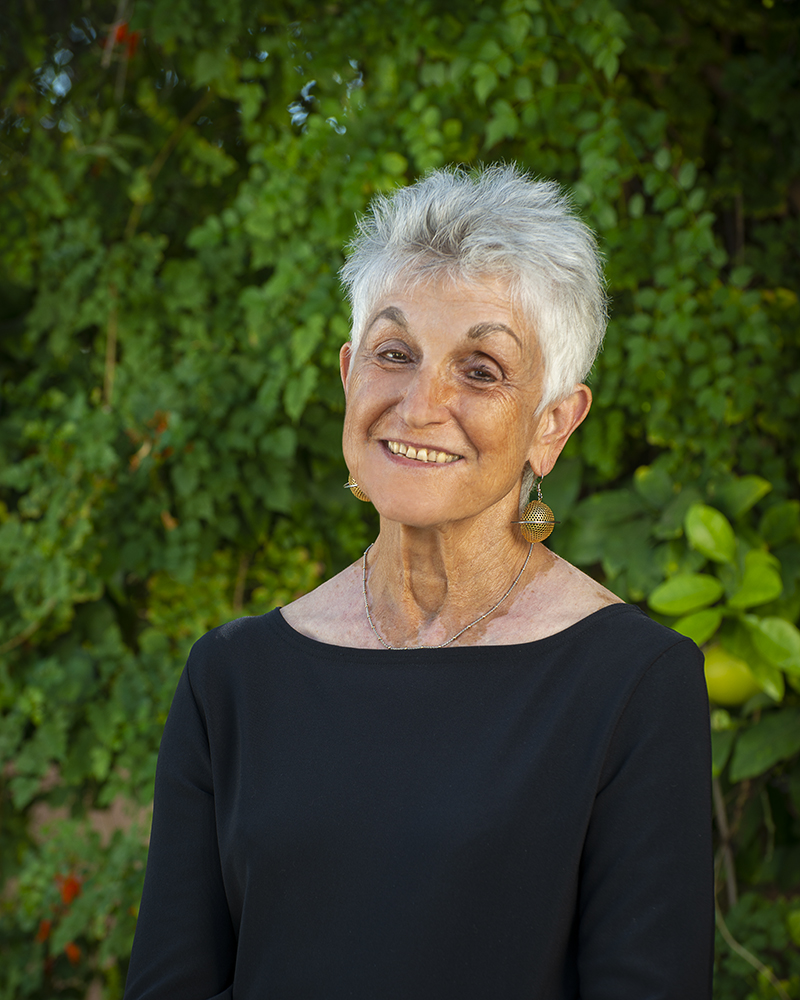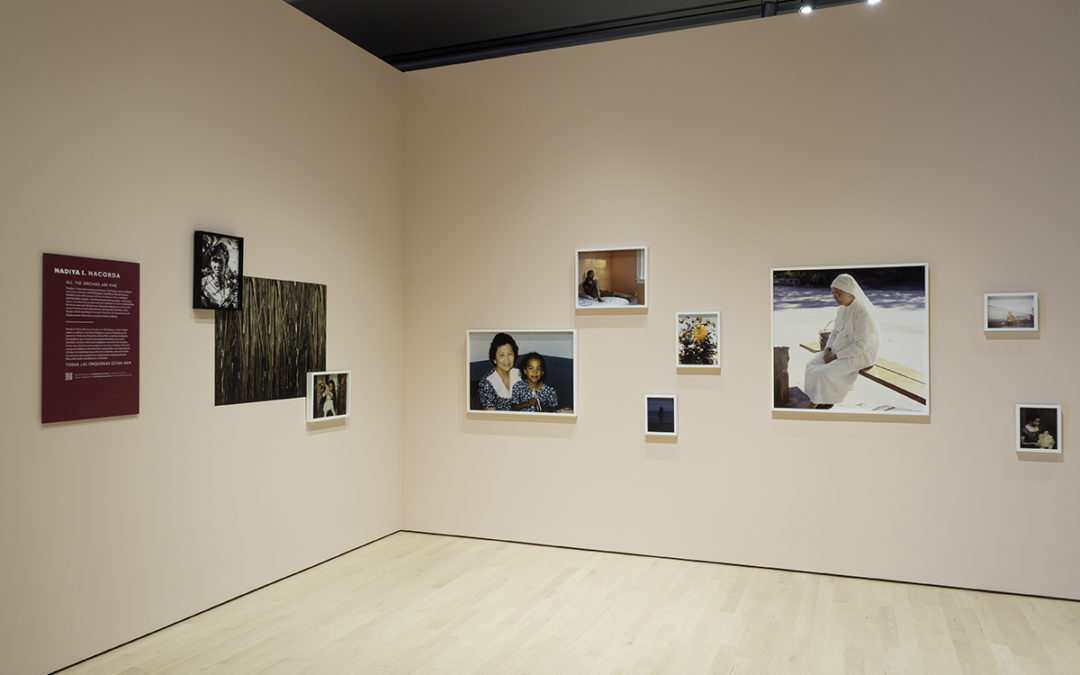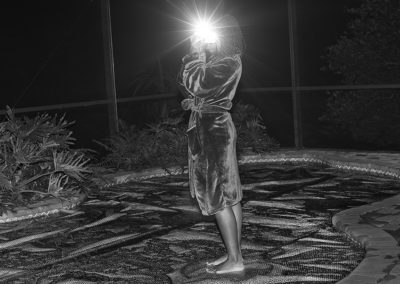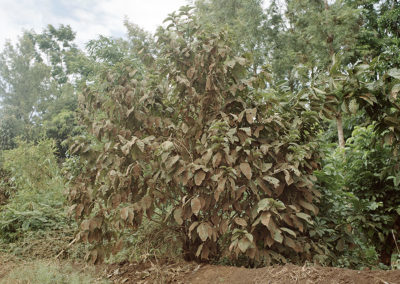Feature Photo: Installation view of And Let It Remain So: Women of the African Diaspora, 2022, Phoenix Art Museum. Image courtesy of Phoenix Art Museum, Photo: Airi Katsuta.
Norton Gallery of Photography at Phoenix Art Museum
July 2022 through February 2023
This visually stunning exhibition encompasses the work of five Black women photographers. All are young, the oldest born in 1988. Each, in her own way and with divergent imagery, explores how her own experience of the African Diaspora influences how she understands identity, history, nationality, sense of place and displacement, and belonging to a community or communities. Many use family and self-portraits, archival images that seem to come out of family albums, landscape photographs, and other images of natural objects, to guide the viewer/s on their own journey of discovery of the many facets of diasporic realities. Photography is the tool to explore the personal understanding and meaning of the cohesiveness of past, present and future.
The exhibition opens with the work of Nadiya I. Nacorda, who is of Black and Asian descent, with Philippine and South African roots. Her work hangs on three separate walls, arranged in irregular, untraditional groupings, layered to suggest relationships both real and symbolic, old and new. Striking is the exhibition entry photo of a young girl holding an old photo, presumably of her parents or grandparents, attached to a larger image of a gently waving ocean. A dark figure (female?) silhouetted, perhaps, against the ocean, exudes mystery. Two images, Like Mother… and Like Daughter…, both standing in balletic poses, connect across the gallery space. These and all Nacorda’s images speak both to the identity and lived experiences of her family and broader histories of displacement and colonization.

Jasmine Clarke, Ludi, 2021. Inkjet print. Collection of the artist. © Jasmine Clarke, from the Shadow of the Palm series.
Born and raised in Brooklyn, Jasmine Clarke’s roots on her father’s side are Jamaican. Inspired by shared family stories, visions and memories that inhabit her mind, she says that, “A picture creates a false sense of reality. The nature of photography tells us that what we are seeing is true, but it is not. It is a selective truth, or even a fiction.” She describes her often fragmentary images as “dreamlike and otherworldly,” as is the half-length silhouette of a father holding a female child. The partial view of a Black man’s head and sand-covered shoulders is both contemplative and riveting, as is the half-length image of a girl staring out to sea, her back turned to the viewer, her hair colorfully beaded into corn rows.
Hellen Gaudence is based in New York City, but works both in the U.S. and her home country of Tanzania. Her series Magharibi (Swahili for the navigation point west of the sun) is on view. The exhibit includes her black and white portraits of African immigrants, shot in Tucson, juxtaposed with color images of roadside plants in various stages of health, covered in red dust. Reminiscent in approach to the much larger photographs by Richard Avedon in his 1980s series In the American West, Gaudence’s subjects are also posed against stark, white backgrounds, offering no information about themselves and identified on the labels only by their first names. The small, color landscapes, photographed somewhere in Africa, draw attention to the coexistence and yet total separation of human subjects and vegetation.
Widline Cadet was born in Haiti, but is based in New York City. Her work hangs on one long wall entirely covered in red and white gingham-checked paper, which echoes the gingham clothing and cloth in one photograph and the blue and white gingham clothing in two others. The effect is visually arresting and speaks to larger issues. Widline says that she “explores notions of belonging, migration and selfhood” in this series entitled Ritual (Disappearance). Even with an awareness of the themes that inform Cadet’s work, it is not easy to discern the meanings of her photographs. An image of three girls with identical faces and dressed in blue gingham, purports, at first glance, to depict three individuals. Two, however, share the same dress Are they triplets or the same person? And what of the two girls – also dressed in blue gingham – who lie on a bed of rose petals, feet toward the viewer?
Sasha Phyars-Burgess, born in Brooklyn to Trinidadian parents, grew up in Bethlehem, Pennsylvania. Her images of family and communities in Trinidad and Tobago are an exploration of where her expectations of the Caribbean both overlap with and diverge from observed reality. She says that she photographs the people she loves and that the camera is not “the best memory aid, but [that] it does help construct the truths you want to keep (good or bad) because it is important to be able to have a say in what you look like, to let others know that you were here once too.” Chadie’s Funeral, Trinidad is evidence of this, as are Hayden’s Daughter, emerging from the sea, and Niya in the Big Yard, where a blanketed baby is closely held to the shoulder of, presumably, her father.
This outstanding, thought-provoking exhibition has been organized by the Center for Creative Photography (University of Arizona, Tucson) and their regular collaborator, Aaron Turner. Turner is an African-American photographer, whose work focuses on Arkansas and the Mississippi delta and his reflections on the place of the Civil Rights movement in his and his family’s experience. He is an assistant professor of art at the University of Arkansas School of Art and director of the Center for Art as Lived Experience.

Karen Hodges
Contributing Writer
Karen Hodges worked in the Curatorial Department of Phoenix Art Museum (PAM) for over two decades. Although mostly involved with painting, sculpture and decorative arts, in all areas of the Collection, she fell in love with photography when the Museum’s cooperative agreement with the Center for Creative Photography (CCP) led to the establishment of the Norton Gallery. Work with Curator, Becky Senf, editing gallery and informational materials, deepened her interest in this art form. She served on the Board of INFOCUS from its founding as a PAM support group and continues to serve as “scribe” (secretary) to the Board of AZPA. Although self-described as a mediocre photographer, Karen has—within her means—collected photography and photo books for years and will continue to do so, even when she runs out of wall and shelf space!
Image Credit: Craig Smith
Contact Karen





